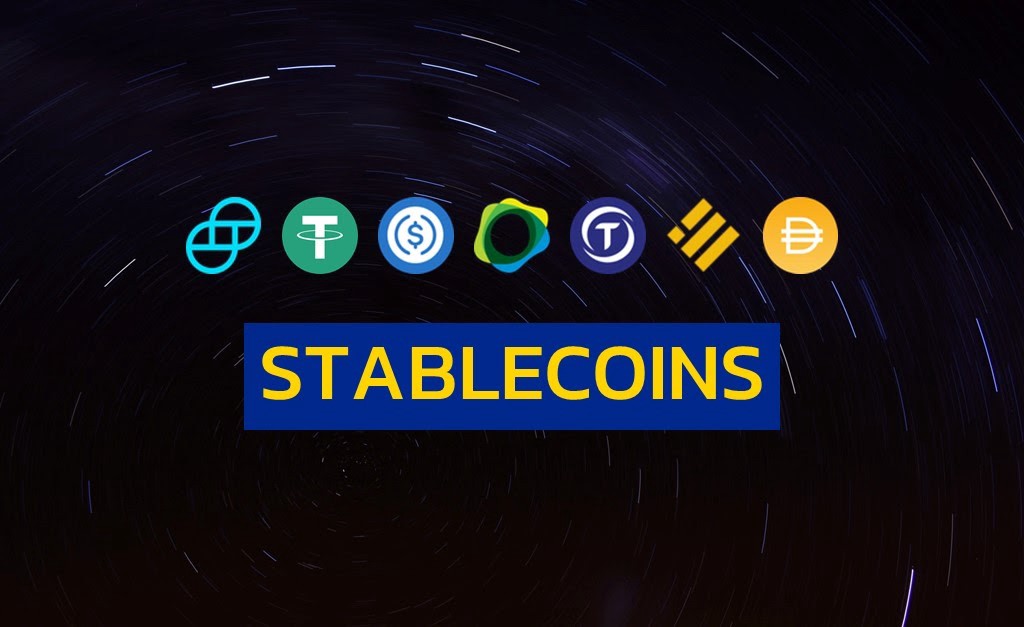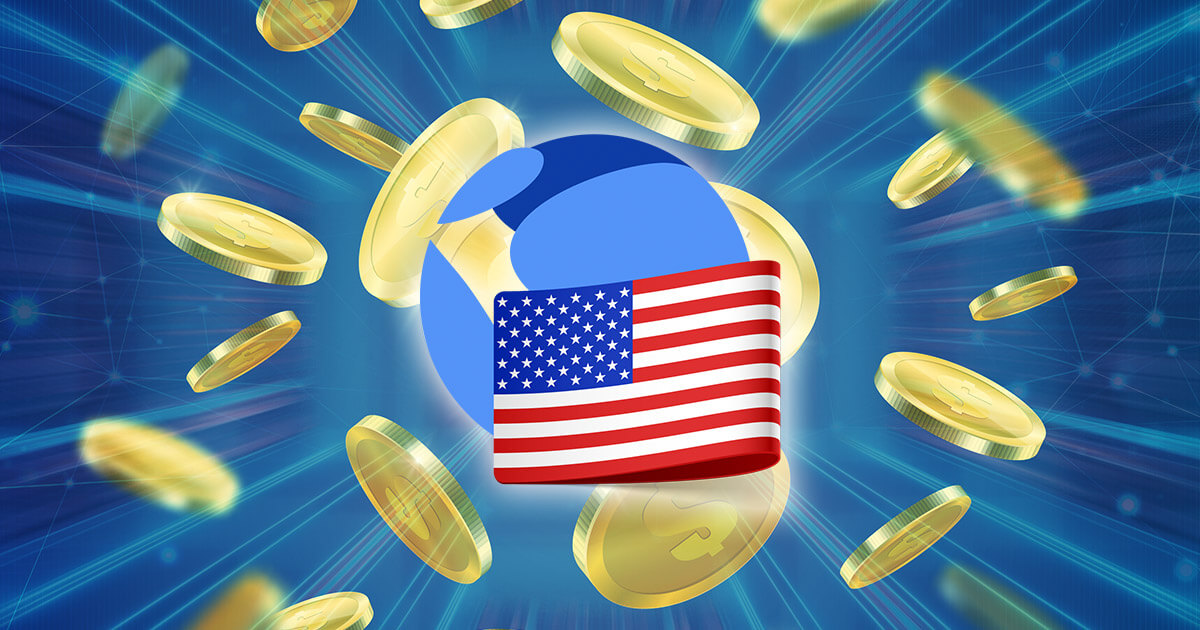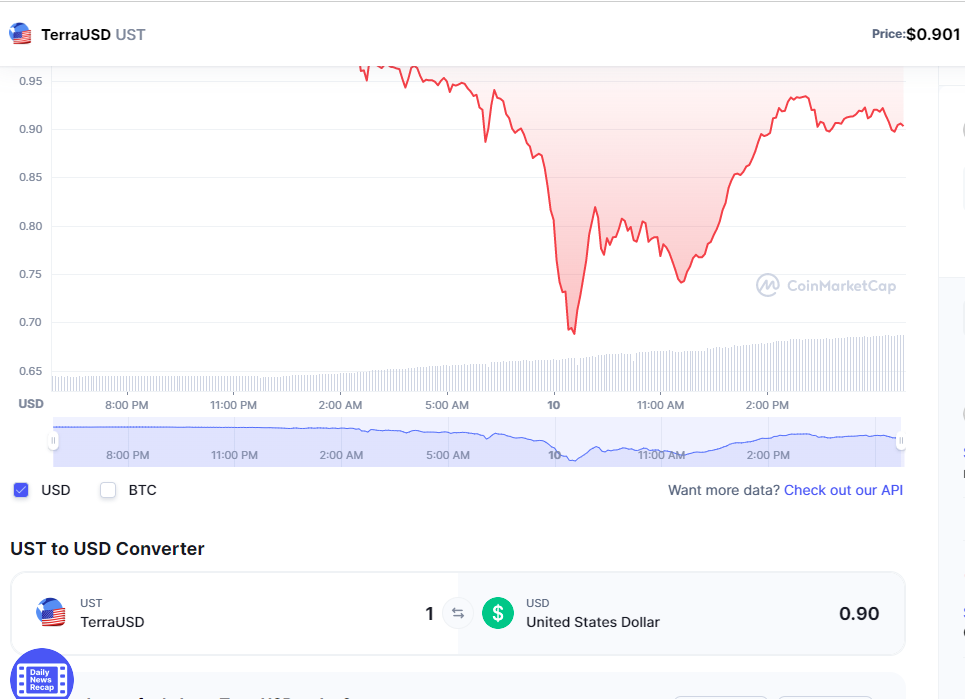
UST drops pegbased on a recent report. Terra's UST, the third-largest stablecoin by market cap, dropped to $0.69 in Monday trading. According to CoinMarketCap statistics, this is an all-time low, even after the Terra-supporting Luna Foundation Guard pushed a $1.5 billion loan to shore up the currency. The quoted price on Coinbase dropped as low as $0.65.
Of course this tragic newswould affect all stablecoin traders around the world, and Nigeria is not an exception. If you are a stablecoin trader this news definitely matters. But if you are pretty new to this let's discuss a bit what these stablecoins are.
What Is A Stablecoin?
A stablecoin is a cryptocurrency that aims to provide price stability and is backed by a reserve asset. Stablecoins have gained popularity since they seek to provide the best of both worlds—instant processing and security or privacy of cryptocurrency payments, as well as the volatility-free steady prices of fiat currencies. While Bitcoin (BTCUSD) is the most popular cryptocurrency, its value is highly volatile. For example, it soared from roughly $5,000 in March 2020 to almost $65,000 in April 2021 before plummeting by over 50% to around $30,000 in June 2021. Even intraday price swings may be extreme, with the cryptocurrency often jumping more than 10% in each direction within a few hours. That renders Bitcoin and other popular cryptocurrencies unsuitable for everyday use by the general public. A currency's value should be generally steady throughout time, and it should operate as a means of trade and storage of value. Users will not adopt it if they are uncertain about its purchasing power.
TerraUSD (UST)
TerraUSD (or UST) is a decentralized, scalable, interest-bearing, algorithmic stablecoin with a variety of features. It is particularly well-known for its monetary policy that is mostly infinitely expandable. Since its inception in 2020, the stablecoin has evolved into the ultimate scalable stablecoin. With a surge in demand for stablecoins, it became evident that the majority of them are not truly scalable. As a result, a stablecoin like TerraUSD was required. It is expected to compete with stablecoin market leader DAI. It provides a scalable experience to the DeFi market in the midst of serious scaling challenges that many traditional chains confront.
TerraUSD is achieved with a few simple rules and regulations. So, interchain capabilities include scalability. TerraUSD uses existing technology and improvements to deliver the best user experience. UST is an algorithmic stablecoin, meaning the cost of minting is equal to the face value. It reserves LUNA, Terra's native cryptocurrency. In other words, to coin one TerraUSD, just $1 of Terra's LUNA token is burned. The stablecoin can also earn stable yield using the “Anchor” yield service, a first for stablecoins. TerraUSD also enables the joining and enabling of blockchain ecosystems using the Dropship protocol. Tradable USD between blockchains and DeFi platforms is possible with Dropship. This protocol maintains scalability. It also ensures UST value stability as LUNA demand and supply dictate TerraUSD value. To mine Terra transactions, miners must stake the native Terra LUNA coin. Terra Network validators must stake LUNA to mine the token. These validators will be LUNA's dollar price oracles. They earn UST tokens through UST transactions. The Anchor protocol, a loan and saving mechanism, promises a 20% return on UST investments. However, MakerDAO's DAI returns 13% and Coinbase's USDC returns 14%. Borrowing LUNA from Anchor is also possible. Loans will be secured by bonded LUNA (bLuna), a staked variant of LUNA that pays interest. Terra wants to soon accept native cryptocurrencies from other Layer0 chains as collateral.
Use Cases Of UST
TerraUSD (UST) is a stablecoin designed to help users and the community. It is used in many services and goods. It is sometimes used with LUNA, and occasionally it is used alone. Interchain utilization and high scalability of TerraUSD. Several DeFi methods can use the currency without sacrificing scalability due to UST's unique minting mechanism. TerraUSD can be used as a payment option in e-wallets like Chai and MemePay. UST has thrilled Terra users in the field of yield or interest-bearing. Anchor's interest or profit on the Terra platform is based on UST block rewards from PoS networks. Dropship, an unique bridging technology, allows UST to effortlessly transfer between blockchains. UST is also used in DApps. For example, Mirror protocol uses UST as a basic asset to generate fungible “synthetic assets” that monitor real-life asset prices in real-time.
The Downfall Of UST
Terra is a blockchain network with its own stablecoin, UST, which is denominated in US dollars. Unlike USDC and Tether, which are nominally backed by cash and bank assets, the UST stablecoin is designed to maintain 1:1 parity with the US dollar through an algorithmic relationship with Terra's native asset, LUNA. Minting LUNA necessitates the burning of UST, and arbitrage opportunities are intended to keep UST as near to $1 as possible.
However on Monday, terraUSD (UST), which burns and mints its sister token LUNA to absorb price shocks, lost its dollar peg for the second time in three days. UST, a popular stablecoin, fell below $0.85 late Monday. The Fed's newest "Financial Stability Report" warned that unexpected, urgent redemptions of stablecoins – cryptotokens tied to another asset like the dollar – are similar to money-market fund runs.
The study, which was updated in November, is issued biannually by the Fed to analyze current threats to the US financial system's stability. According to the report,
“„These vulnerabilities may be exacerbated by a lack of transparency regarding the riskiness and liquidity of assets backing stablecoins.
The Traders' Panic
Some traders panicked and sold once TerraUSD deviated from its peg. Others began selling ether and buying TerraUSD to restore the peg, putting pressure on the dollar value of the second-largest cryptocurrency by market value. Mr. Solot added that some traders sold bitcoin over the weekend in expectation that the platform would need to liquidate its bitcoin reserves to fund the peg. Bitcoin plummeted 10% Monday to over $31,076 amid a global selloff in the cryptocurrency markets.
According to CoinMarketCap, TerraUSD was trading around 80 cents on Monday evening, after reaching a low of 69 cents earlier. Panic selling also affected the associated Luna cryptocurrency, which fell 50% from Sunday to Monday, wiping off more than $10 billion in market value, according to CoinMarketCap data. The Luna Foundation Guard, a Terra-supporting NGO, announced that it voted to back TerraUSD by lending $750 million in bitcoin to trading businesses to maintain the stablecoin's peg and loan another 750 million in TerraUSD to acquire more bitcoin. Do Kwon, the TerraUSD's South Korean developer, co-founded the Luna Foundation Guard and announced this year that it would maintain a massive bitcoin reserve fund that would spend lavishly if necessary to safeguard the stablecoin's peg. Terraform Labs, his company, has contributed several billion dollars in cryptocurrency to the NGO.
Mr. Kwon posted a tweet on Monday saying,
“„Deploying more capital—steady lads.
According to Mr. Solot of Tagus Capital, the selloff could have been caused by someone or a group of persons attempting to break the peg. Regardless of the cause, he does not expect TerraUSD to recover to $1 immediately because a queue of sell orders is still pending. He also added,
“„I don’t think this peg is going to come back soon, there’s so much TerraUSD still to come out of the system, and that’s going to continue putting pressure on the peg.
With all these things happening you may ask if there are other stablecoins worth investing to. Though most stablecoins are volatile, you may consider checking this list.
Best Stablecoins To Buy
- Tether (USDT)
- Dai (DAI)
- Binance USD (BUSD)
- USD Coin (USDC)
- TrueUSD (TUSD)
- Digix Gold Token (DGX)
Conclusion
Stablecoin is actually a booming investment not only in Nigeria but also around the world. If you are planning yourself to get into this you have to do your research and manage your expectations.



